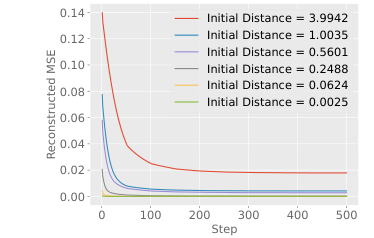How to Trace Latent Generative Model Generated Images without Artificial Watermark?
Zhenting Wang, Vikash Sehwag, Chen Chen, Lingjuan Lyu, Dimitris N. Metaxas, Shiqing Ma·May 22, 2024
Summary
This paper investigates the ability to trace latent generative model-generated images without artificial watermarks, introducing a method called LATENTTRACER. The study employs latent inversion and a critical encoder initialization to distinguish model-generated images with high accuracy, raising concerns about inherent "watermarks" in decoder characteristics. LATENTTRACER is effective on state-of-the-art models like Stable Diffusion and Kandinsky, outperforming existing techniques in tracing and attribution. The method is applicable to both diffusion and autoregressive models, and its efficiency is improved by leveraging the encoder's latent projection. The research highlights the potential for tracing without altering the image quality and the implications for intellectual property protection and responsible AI usage.
Introduction
Background
Evolution of generative models and their impact on image synthesis
Growing concern over tracing and attribution in AI-generated content
Objective
To introduce LATENTTRACER: a novel method for tracing model-generated images without artificial watermarks
Highlight the significance of inherent decoder characteristics as "watermarks"
Methodology
Latent Inversion and Critical Encoder Initialization
Latent Inversion
Technique for reconstructing images from the latent space
Importance in understanding the model's underlying structure
Critical Encoder Initialization
Selecting a specific encoder state for tracing
Its role in enhancing tracing accuracy
Data Collection and Analysis
Model Selection
Focus on state-of-the-art models: Stable Diffusion and Kandinsky
Benchmarking
Comparison with existing tracing techniques
Evaluation of LATENTTRACER's performance
Application to Different Models
Diffusion Models
How LATENTTRACER adapts to diffusion models
Autoregressive Models
Extension to autoregressive models and its effectiveness
Efficiency Enhancement
Leveraging latent projection for improved tracing speed
Impact on computational resources
Implications and Discussion
Image Quality and Tracing Trade-off
Maintaining high image quality while tracing
Intellectual Property Protection
Challenges and opportunities for copyright and attribution in AI-generated content
Responsible AI Usage
Ethical considerations and guidelines for the use of LATENTTRACER
Conclusion
Summary of LATENTTRACER's contributions
Future directions and potential improvements in tracing technology
Basic info
papers
computer vision and pattern recognition
machine learning
artificial intelligence
Advanced features
Insights
Which state-of-the-art models is LATENTTRACER effective on, and how does it compare to existing tracing techniques?
What method does the paper introduce for tracing latent generative model-generated images?
What are the implications of LATENTTRACER for intellectual property protection and responsible AI usage?
How does the study ensure high accuracy in distinguishing model-generated images?





